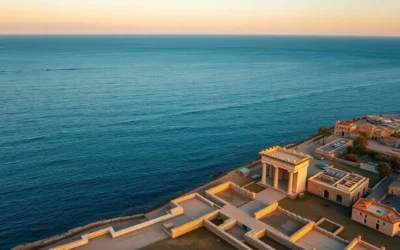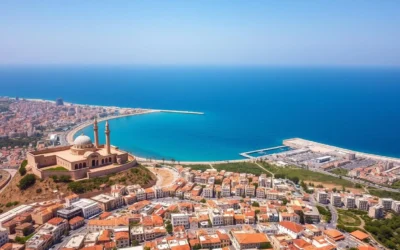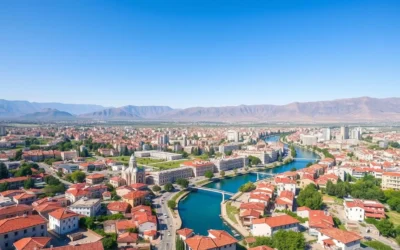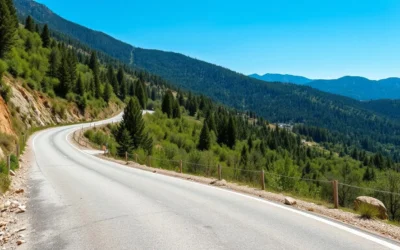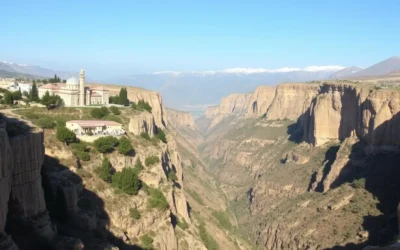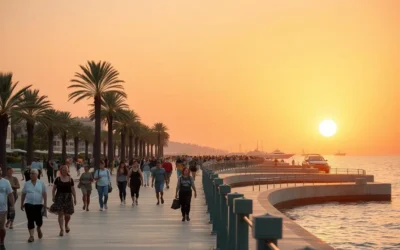Did you know Byblos is one of the oldest continuously inhabited cities in the world, with a history stretching back over 7,000 years? This ancient Phoenician port city on Lebanon’s Mediterranean coast isn’t just a UNESCO World Heritage site—it’s a living museum where you can walk through millennia of human civilization while enjoying modern Lebanese hospitality, cuisine, and beach life.
✓ Flights ✓ Accommodations ✓ Rental Cars ✓ Tours & Activities ✓ Cruise Options
Key Takeaways
- Byblos is one of the oldest continuously inhabited cities in the world, dating back to 8000 BCE
- The city is a UNESCO World Heritage Site known for its ancient Phoenician ruins, medieval Crusader castle, and charming old town
- Byblos offers a perfect mix of historical exploration, Mediterranean beaches, and vibrant nightlife
- The city is easily accessible from Beirut, located about 40 km (25 miles) north along the coast
- Spring (April-June) and fall (September-November) offer the best weather for exploring Byblos
Getting There & Planning Your Journey
Byblos (also known as Jbeil in Arabic) is conveniently located about 40 km (25 miles) north of Beirut along Lebanon’s scenic coastal highway. Most international travelers arrive through Beirut’s Rafic Hariri International Airport before making their way to Byblos.
From Beirut to Byblos
- By Car: The most convenient option is renting a car (check rental options) and driving along the coastal highway, which takes approximately 45-60 minutes depending on traffic.
- By Public Transport: Shared taxis (known as “service”) and minibuses depart regularly from Beirut’s Charles Helou Station. The journey costs around 5,000-8,000 LBP and takes about an hour.
- By Taxi: Private taxis from Beirut to Byblos are readily available but negotiate the fare before departing (typically 30-40 USD).
Ready to explore ancient Byblos?
Book your flights to Lebanon and start your journey to one of the world’s oldest cities.
Best Time to Visit Byblos
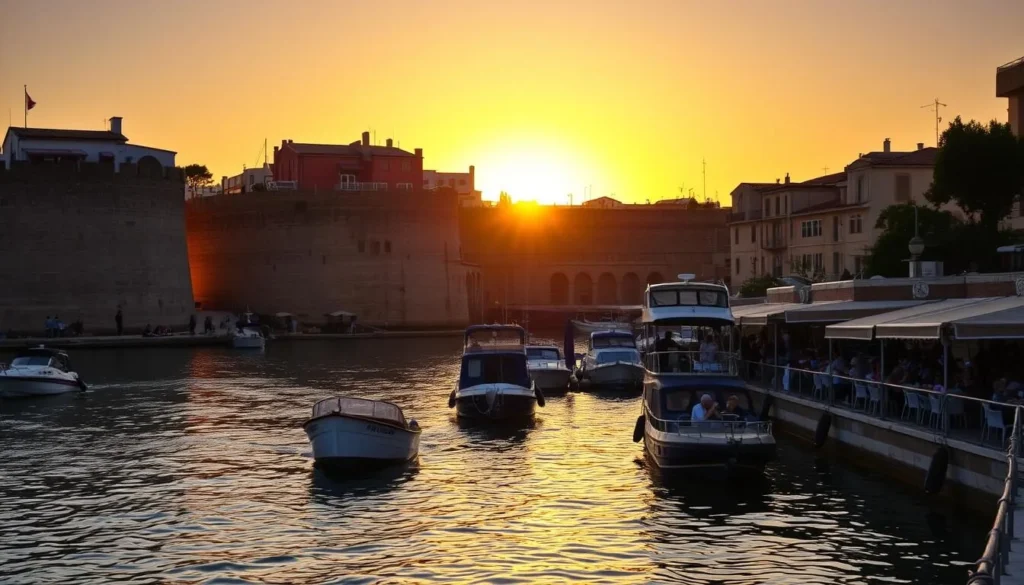
The climate in Byblos is typically Mediterranean, with hot, dry summers and mild, rainy winters. The best times to visit are during spring and fall when temperatures are pleasant for both sightseeing and beach activities.
| Season | Months | Temperature | Considerations |
| Spring | April-June | 18-27°C (64-81°F) | Ideal weather, blooming wildflowers, fewer tourists |
| Summer | July-August | 26-32°C (79-90°F) | Peak tourist season, perfect for beaches, Byblos Festival |
| Fall | September-November | 20-28°C (68-82°F) | Pleasant temperatures, fewer crowds, lower prices |
| Winter | December-March | 10-18°C (50-64°F) | Occasional rain, quieter atmosphere, some sites may have limited hours |
Local Tip: If you visit during July, don’t miss the Byblos International Festival, which features world-class musical performances set against the backdrop of the ancient harbor.
Getting Around Locally
Byblos is a compact city with most attractions concentrated in and around the old town area. The historic core is pedestrian-friendly and best explored on foot.
Transportation Options
- Walking: The most enjoyable way to experience Byblos, especially in the Old Souk and harbor area
- Taxis: Available throughout the city for longer distances
- Rental Cars: Useful if you plan to explore the surrounding areas and other parts of Lebanon
Where to Stay in Byblos
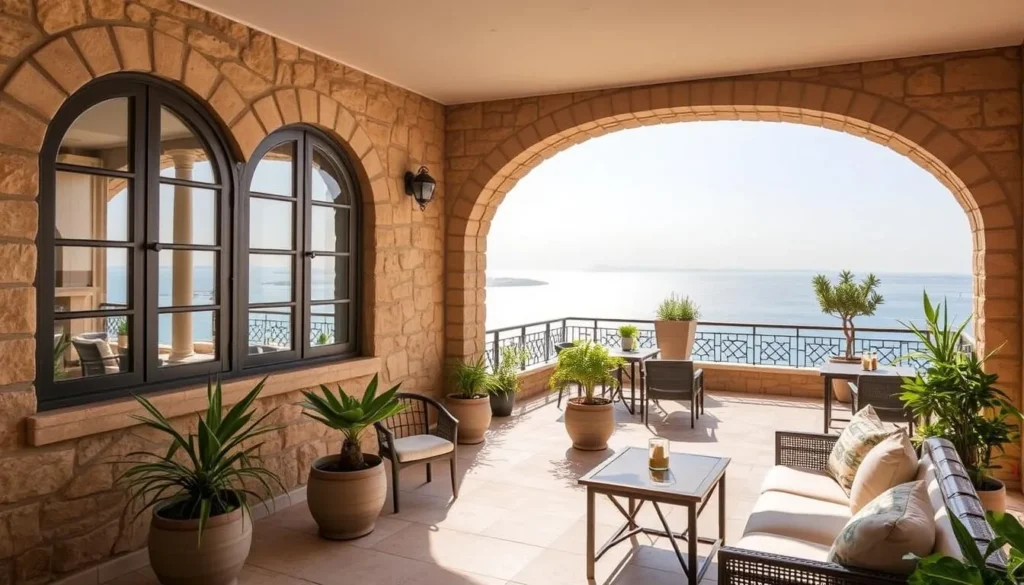
Byblos offers a range of accommodation options from luxury beachfront resorts to charming boutique hotels in historic buildings. Most accommodations are within walking distance of the main attractions.
Luxury Options
- Byblos Sur Mer
- EDDÉ Sands Hotel & Resort
- Victory Byblos Hotel & Spa
Expect to pay $150-300 per night for luxury accommodations with sea views and premium amenities.
Mid-Range Options
- Ahiram Hotel Byblos
- L’Hôtel de Mon Père
- Byblos Comfort Hotel
Mid-range hotels typically cost $80-150 per night and offer comfortable rooms with good locations.
Budget Options
- Byblos Guesthouse
- Monoberge Byblos
- Local guesthouses and Airbnbs
Budget accommodations range from $40-80 per night and often provide a more authentic local experience.
Find Your Perfect Stay in Byblos
From luxury beachfront resorts to charming historic guesthouses, book your ideal accommodation today.
Ancient History and Cultural Heritage

Byblos boasts an extraordinary history spanning over 7,000 years. The city has been continuously inhabited since Neolithic times and has witnessed the rise and fall of numerous civilizations, from the Phoenicians to the Ottomans.
Phoenician Legacy
As one of the oldest Phoenician cities, Byblos was a major trading hub and is believed to be where the Phoenician alphabet was developed—the precursor to many modern writing systems. The archaeological site contains remnants of Phoenician temples, royal tombs, and city walls.
UNESCO World Heritage Status
Byblos was designated a UNESCO World Heritage site in 1984, recognizing its exceptional universal value and historical significance. The site encompasses multiple layers of civilization, with structures dating from the Neolithic period through the Crusader era.
“Byblos is a testament to the extraordinary longevity of human settlement. Few places on earth can claim such a continuous and rich historical narrative spanning thousands of years.”
Explore Byblos with Expert Guides
Discover the rich history of this ancient city with knowledgeable local guides who bring the past to life.
Exploring the Medieval Crusader Castle
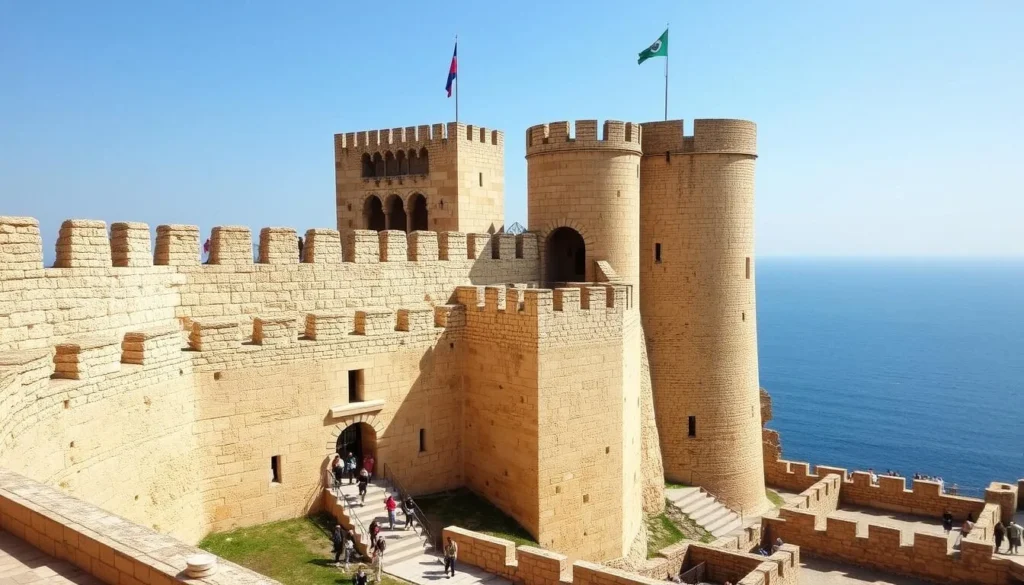
The Crusader Castle stands as one of Byblos’ most iconic landmarks. Built by the Crusaders in the 12th century, this impressive fortress offers a fascinating glimpse into medieval military architecture and the Crusader period in the Levant.
What to See at the Castle
- Roman Columns: The castle was built using materials from earlier Roman structures
- Castle Keep: Climb to the top for panoramic views of Byblos and the Mediterranean
- Archaeological Museum: Located within the castle, displaying artifacts from various periods
- Moat and Defensive Walls: Excellent examples of medieval military engineering
The castle is open daily from 8:00 AM to 6:00 PM in summer and 8:00 AM to 5:00 PM in winter. Entrance fees are approximately 8,000 LBP for adults (around $5 USD at official exchange rates).
Visitor Tip: Hire a local guide at the entrance for a more enriching experience. They can explain the historical context and point out easily missed details for around $20-30.
The Historic Port and Harbor Area
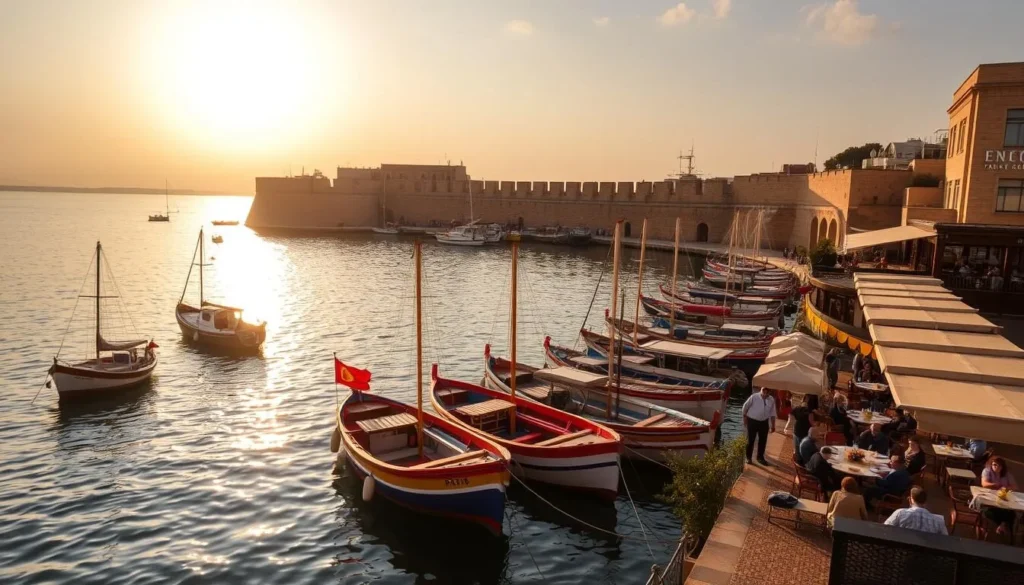
The ancient harbor of Byblos has been a center of maritime trade for millennia. Today, it combines historical significance with a charming atmosphere, making it one of the most picturesque spots in Lebanon.
Traditional Fishing Activities
Local fishermen still use the harbor daily, maintaining traditions that have continued for generations. Early mornings offer the best opportunity to watch them bring in their catch and prepare their nets for the next day.
Waterfront Dining
The harbor area is lined with excellent seafood restaurants serving the freshest catch. Pepe’s Fishing Club is a local institution, offering delicious Lebanese cuisine with spectacular views of the Mediterranean.
| Restaurant | Specialty | Price Range | Notes |
| Pepe’s Fishing Club | Fresh seafood, Lebanese mezze | $$-$$$ | Historic venue with celebrity photos |
| Bab El Mina | Grilled fish, seafood platters | $$ | Excellent harbor views |
| Feniqia | Traditional Lebanese cuisine | $$ | Authentic local flavors |
Sunset Views
The harbor offers spectacular sunset views that shouldn’t be missed. Bring your camera and find a spot along the seawall or at one of the waterfront cafes to enjoy nature’s daily show.
The Old Souk and Shopping Experience
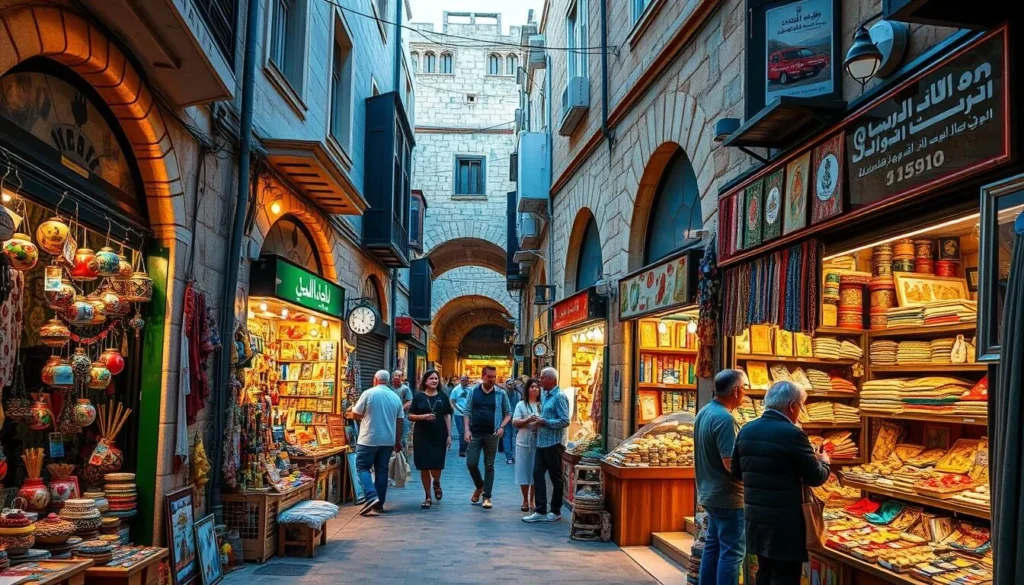
Byblos’ Old Souk is a charming labyrinth of narrow stone-paved streets and alleys lined with shops, cafes, and restaurants. Restored after Lebanon’s civil war, this historic marketplace retains its medieval character while offering modern shopping and dining experiences.
What to Buy
- Handcrafted Jewelry: Look for pieces inspired by Phoenician designs
- Cedar Wood Products: Lebanon’s national symbol crafted into beautiful souvenirs
- Traditional Textiles: Embroidered tablecloths, cushion covers, and clothing
- Local Food Products: Lebanese olive oil, za’atar spice mix, and sweets
The souk is particularly magical in the evening when the stone pathways are illuminated, and restaurants set up outdoor seating. Many shops stay open until around 10:00 PM, especially during summer months.
Shopping Tip: Friendly bargaining is expected in the souk, but keep it respectful. Start by offering about 70% of the asking price and work toward a mutually agreeable figure.
Byblos, Lebanon: Best Things to Do – Top Picks

Beyond the major attractions already covered, Byblos offers many more fascinating sites and experiences. Here are additional must-see attractions and activities to include in your itinerary.
Must-Visit Historical Sites
- Roman Amphitheater: A small but well-preserved theater dating from the 2nd century CE
- Royal Necropolis: Ancient tombs of Byblos kings, including the famous tomb of King Ahiram with the earliest known Phoenician inscription
- Byblos Wax Museum: Depicting scenes from Lebanese history and daily life through the ages
- Fossil Museum: Housing an impressive collection of fossils found in the region, some dating back millions of years
Cultural Activities
- Byblos International Festival: Held annually in July, featuring international music acts in the historic setting
- St. John-Marc Cathedral: A beautiful Maronite church built during the Crusader period
- Armenian Genocide Orphans’ Museum: Documenting an important chapter in Lebanon’s Armenian community history
Experience the Best of Byblos
Don’t miss any of Byblos’ top attractions. Book guided tours and activities with expert local guides.
Mediterranean Beach Life and Activities
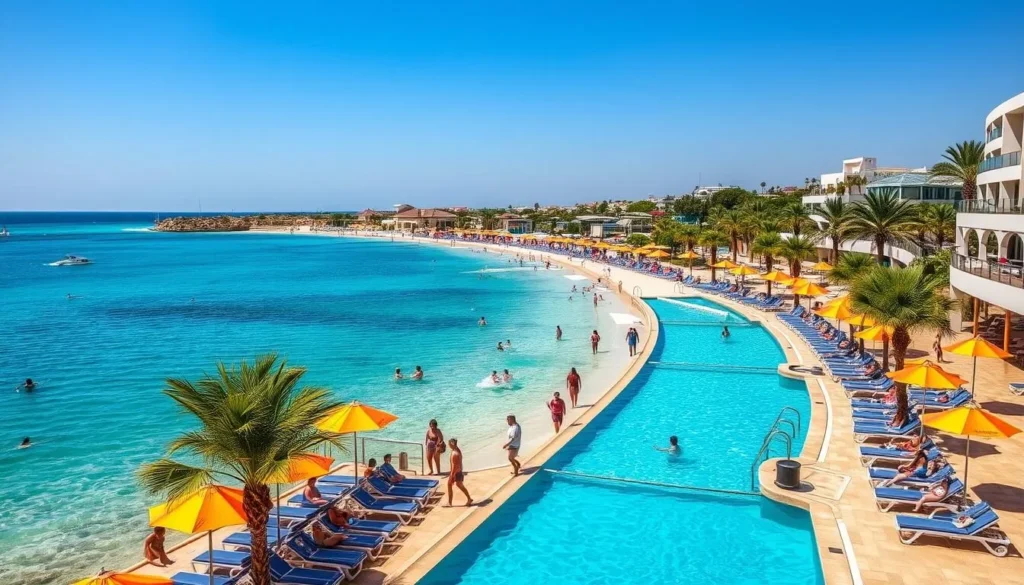
Byblos offers excellent Mediterranean beaches that provide a perfect complement to the city’s historical attractions. Whether you’re looking to relax on the sand or try water sports, the coastline has something for everyone.
Popular Beaches and Beach Clubs
- Byblos Public Beach: Free access with basic facilities, popular with locals
- Eddé Sands: Upscale beach resort with pools, restaurants, and water sports
- Bahsa Beach: A more relaxed option with fewer tourists
- Bonita Bay: Family-friendly beach with good facilities
Water Activities
Many beach clubs and operators offer water sports and activities including:
- Jet skiing
- Paddleboarding
- Parasailing
- Scuba diving and snorkeling
- Boat tours along the coast
Beach Tip: Most private beach clubs charge an entrance fee (typically $15-30) that includes a lounger and umbrella. Weekdays are less crowded and often offer discounted rates.
Traditional Lebanese Cuisine and Dining Scene
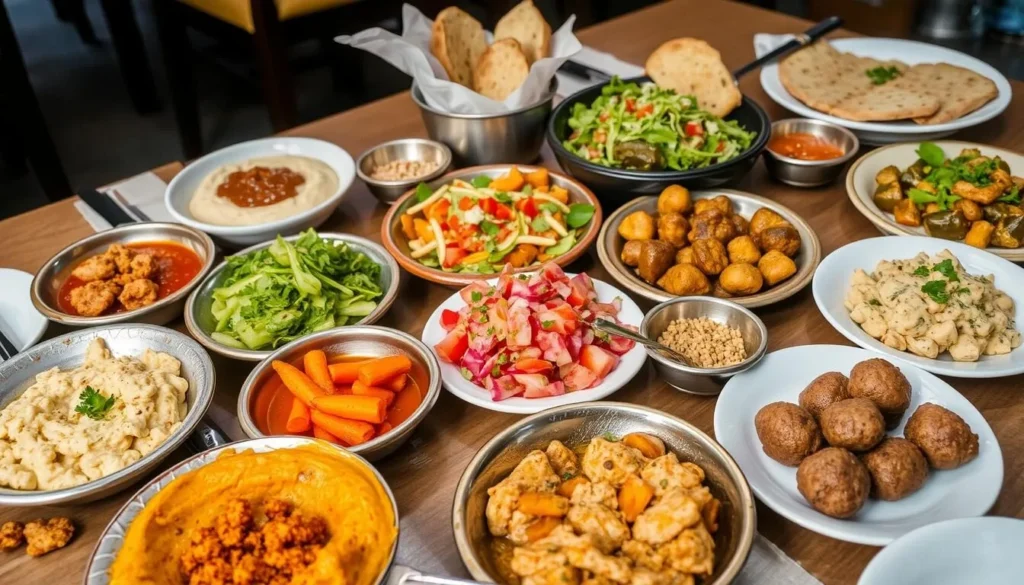
Lebanese cuisine is renowned worldwide for its fresh ingredients, bold flavors, and healthy preparations. Byblos offers an excellent selection of restaurants where you can sample authentic local dishes.
Must-Try Lebanese Dishes
- Mezze: Small dishes served as appetizers or collectively as a meal, including hummus, tabbouleh, and baba ghanoush
- Fresh Seafood: Given Byblos’ coastal location, fish and seafood dishes are a specialty
- Kibbeh: Lebanon’s national dish made with bulgur, minced onions, and ground meat
- Manakish: Lebanese flatbread topped with za’atar, cheese, or ground meat
- Baklava and Lebanese Sweets: Delicious pastries made with phyllo dough, nuts, and honey
Dining Recommendations
Beyond the harbor restaurants mentioned earlier, these establishments offer excellent Lebanese cuisine:
| Restaurant | Specialty | Location | Price Range |
| Malena | Contemporary Lebanese | Old Souk | $$$ |
| Locanda a la Granda | Fusion Lebanese-Mediterranean | Near harbor | $$ |
| Le Petit Café | Traditional mezze | Old Town | $-$$ |
Dining Tip: Lebanese meals are typically enjoyed at a leisurely pace and often shared family-style. Order a variety of mezze dishes to sample different flavors rather than individual main courses.
Practical Travel Tips

Here are some essential tips to help you make the most of your visit to Byblos:
Safety and Etiquette
- Byblos is generally safe for tourists, but always check current travel advisories before visiting Lebanon
- Dress modestly when visiting religious sites (shoulders and knees covered)
- Ask permission before photographing locals
- Basic Arabic phrases like “shukran” (thank you) are appreciated, though many people in the tourism industry speak English and French
Money Matters
- The Lebanese Pound (LBP) is the official currency, but US dollars are widely accepted
- Credit cards are accepted at larger establishments, but carry cash for smaller shops and cafes
- ATMs are available throughout Byblos, particularly in the new town area
- Be aware of Lebanon’s complex economic situation and check current exchange rates before your trip
Communication
- Purchase a local SIM card upon arrival for affordable data and calls
- Free Wi-Fi is available in most hotels, restaurants, and cafes
- Arabic is the official language, but French and English are widely spoken, especially in tourist areas
Important: Always carry a copy of your passport and keep emergency contact numbers handy. The Lebanese tourism police can be reached at 1735.
Day Trips from Byblos
Byblos makes an excellent base for exploring other attractions in Lebanon. Here are some recommended day trips:
Batroun (20 km north)
A charming coastal town known for its Phoenician wall, old souk, and famous lemonade. Perfect for a half-day trip.
Jeita Grotto (25 km south)
Spectacular limestone caves with stunning stalactites and stalagmites. One of Lebanon’s natural wonders.
Harissa (15 km south)
Home to Our Lady of Lebanon statue and offering panoramic views of the bay of Jounieh.
Explore More of Lebanon
Make the most of your trip with a rental car to discover Lebanon’s diverse attractions at your own pace.
Conclusion
Byblos offers a rare blend of ancient history, Mediterranean beauty, and Lebanese hospitality that makes it a must-visit destination. From exploring one of the world’s oldest continuously inhabited cities to relaxing on beautiful beaches and savoring delicious cuisine, Byblos provides an unforgettable travel experience.
As you walk through the ancient streets where Phoenicians once traded and Crusaders later built their fortifications, you’ll gain a deeper appreciation for the layers of civilization that have shaped this remarkable city. Whether you’re a history enthusiast, a beach lover, or a culinary adventurer, Byblos has something special to offer.
Ready to walk through millennia of history while enjoying modern Lebanese hospitality? Start planning your journey to Byblos today!
Begin Your Byblos Adventure
Book your complete trip to experience one of the world’s oldest cities.
The above is subject to change.
Check back often to TRAVEL.COM for the latest travel tips and deals.

